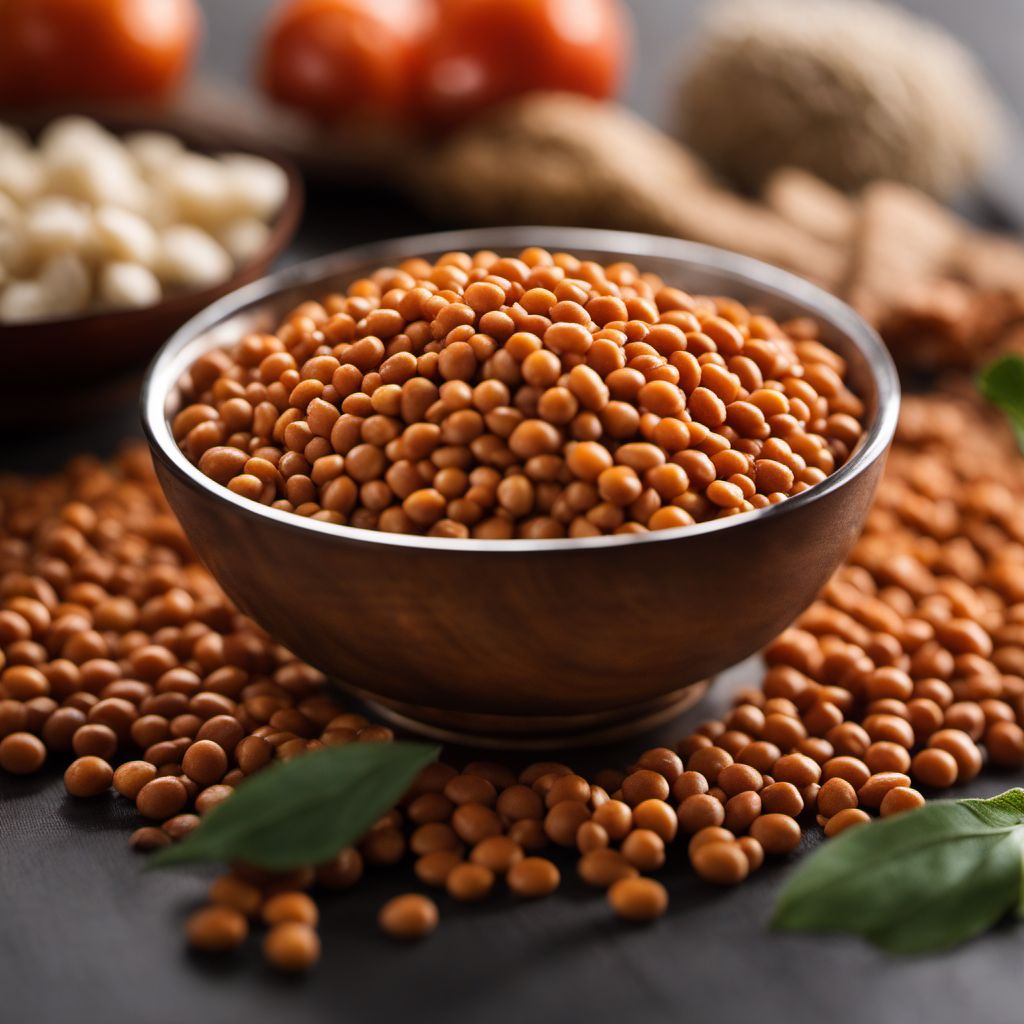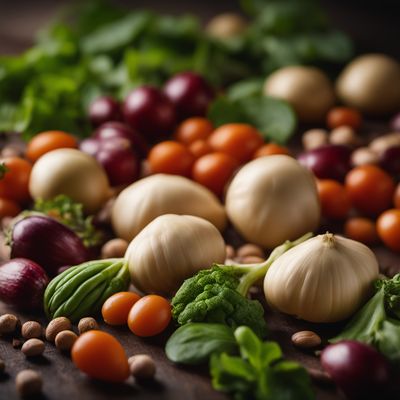
Ingredient
Lentils (without pods)
Versatile Legumes
Lentils, without pods, are small, lens-shaped legumes that come in a variety of colors, including green, brown, red, and black. They have a mild, earthy flavor and a slightly grainy texture when cooked. Lentils are commonly used in soups, stews, salads, and side dishes, and they can be cooked on their own or combined with other ingredients to create hearty and nutritious meals.
Origins and history
Lentils have been cultivated for thousands of years and have a rich history in many cultures. They are believed to have originated in the Near East and have been a staple food in the diets of ancient civilizations such as the Egyptians, Greeks, and Romans. Lentils spread to other parts of the world through trade routes and colonization, becoming an essential ingredient in cuisines across Asia, Europe, and the Americas.
Nutritional information
Lentils, without pods, are a nutritional powerhouse, packed with protein, fiber, and essential minerals such as iron and folate. They are also low in fat and cholesterol and provide a good source of complex carbohydrates. With approximately 230 calories per cup of cooked lentils, they are a filling and nutritious addition to any meal.
Allergens
May contain gluten from cross-contamination during processing.
How to select
When selecting lentils, without pods, choose ones that are dry, firm, and free from any signs of moisture or insect damage. Avoid lentils that are discolored or have a musty smell. Additionally, opt for organic or locally sourced lentils for a higher quality product.
Storage recommendations
To keep lentils fresh and prevent them from spoiling, store them in an airtight container in a cool, dry place away from direct sunlight. Proper storage can help maintain their quality and extend their shelf life.
How to produce
Lentils can be easily grown at home by planting the seeds in well-drained soil and providing them with adequate sunlight and water. They are relatively low-maintenance and can be harvested when the pods turn brown and dry.
Preparation tips
Before cooking lentils, without pods, rinse them thoroughly under cold water to remove any dirt or debris. Lentils do not require soaking like other legumes, making them a convenient option for quick and easy meals. They can be cooked by boiling them in water or broth until tender, usually taking around 20-30 minutes. Lentils can be seasoned with herbs, spices, and vegetables to enhance their flavor and used in a variety of dishes such as soups, stews, salads, and curries.
Substitutions
Canned or cooked beans can be used as a substitute for lentils, without pods, in most recipes. However, the texture and cooking time may vary. Other suitable substitutes include split peas, chickpeas, or black-eyed peas, depending on the desired flavor and texture.
Culinary uses
Lentils, without pods, are incredibly versatile and can be used in a wide range of culinary applications. They are commonly used in soups, stews, and curries, providing a hearty and nutritious base. Lentils can also be used in salads, side dishes, and vegetarian patties or burgers. They pair well with various herbs, spices, and vegetables, allowing for endless flavor combinations.
Availability
Lentils, without pods, are cultivated and consumed in many regions around the world, including India, the Middle East, Europe, and the Americas. They are readily available in grocery stores, supermarkets, and specialty food stores.


